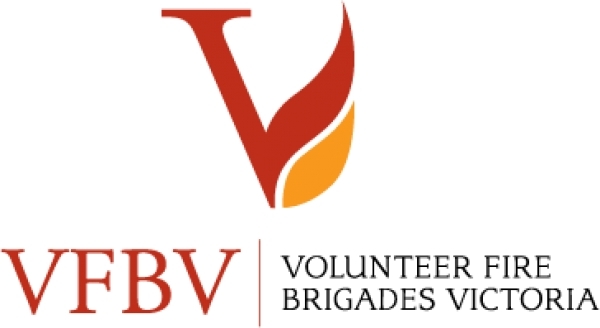Icebergs Ahead
By Adam Barnett, VFBV Chief Executive Officer
The RMS Titanic hit an iceberg on its maiden voyage just before midnight on the 14th April 1912, sinking three hours later, and taking with her more than 1,500 of the 2,200 people on board.
What does this have to do with fire services you ask? Not much admittedly, however recent speculation does point to the fact that an out-of- control fire in one of the ship’s coal bunkers may have contributed to the ship’s high speed that contributed to the collision as opposed to speculation the captain was eager to beat the crossing time of Titanic’s sister ship the Olympic.
But my main reason is both the ship, and the iceberg, have become popular metaphors for not only the hubris of humankind (unsinkable ship), but the litany of errors that contributed to the disaster that are only seen with the benefit of hindsight. It is also a good demonstration of cause and effect of the risk appetite implemented by her captain, crew and owner/ operator White Star Line.
Prior to the sinking, the ship had received multiple warnings from other ships. In fact, before the ship even set sail it was generally accepted that there was an increased risk of icebergs over the previous years. However, once they set sail, multiple reports streamed in. The first was two days prior to the sinking where the French ship La Touraine sighted two icebergs.
Then on the morning of the sinking (0912 hours), the RMS Caronia passed on reports of westbound steamers reporting icebergs. Dutch ship Noordam informed it later that morning (1147) that they had encountered much ice. Early afternoon (1349) another report came in from German steamer Amerika that it has passed two large icebergs. Then at 1354 RMS Baltic sent a wireless telegram reporting that the Greek steamer Athinai had sighted icebergs and extensive ice fields drifting along the same route as the Titanic. Then at 1830 the SS Californian observed three large icebergs south of her position. At 2140 the SS Mesaba reported heavy pack ice and a great number of icebergs. The final warning came again from SS Californian at 2255 reporting she was surrounded by ice and had stopped for the night. 45 minutes later, the Titanic collided with the iceberg.
In essence all these warnings were either dismissed, not passed on or treated as minor or irrelevant. Hindsight shows us how disaster could have been averted should the countless warnings have been heeded in the first place. A good parallel for how we often feel over our countless warnings on the state of CFA funding and resourcing.
You have heard me repeat frequently that Victoria is considered one of the most fire prone places in the world due to our local flora, topology and weather patterns. In fact – the two most fire prone places are considered to be Victoria and California USA.
And just like the two warnings that the SS Californian sent in 1912, her namesake the State of California is sending what can only be described as one of the biggest warning calls we can get.
We look on with a shared understanding and horror at the extent of the Californian bushfires that have devastated large parts of the greater Los Angeles area and so far have claimed 28 people, and thousands of destroyed structures. Sadly, these numbers will only grow as the fires continue to burn. Our hearts and thoughts are with all those affected.
But in a frightening parallel to Victoria, criticism of years of Government neglect and underfunding of California’s fire services and bureaucratic heavy bodies that have failed to adequately prepare are ringing loud and clear.
And while there has been some surprise that these fires have taken grip in North America’s winter – one should remember how early the 2019/20 fires first started along the Australian eastern seaboard hitting NSW in August 2019.
As I have repeatedly stated, reducing CFA budgets in one of the most fire prone places in the world, and with the Government’s own climate modelling predicting longer, more frequent and more intense fire seasons – is just complete madness. This time around however, we don’t have to rely on “hindsight” to heed the warnings.
California also has the largest firefighting air fleet in the world. A sombre reality check for those that think aircraft are a silver bullet. Don’t get me wrong – aircraft are a crucial and effective part of our firefighting operations. They make an incredible difference when they are available and can be used. But history tells us that on many of the worst days of natural disasters – we often cannot get aircraft in the air due to the extreme weather conditions and winds. This is not an argument for less aviation funding – but rather a call to stop diverting funding from frontline services as if its either/or. It is not one or the other – it must be both. Boots on the ground is our first and last line of defence from any bushfire. And those boots need trucks to get there and fight it.
Recently the State Government announced a $10M boost to CFA’s fleet budget. A very welcome boost completely overshadowed by the announcement that it comes at the cost of a new emergency service tax hike that will in some cases triple the cost to residents and property owners. While collecting an extra $600M in the first year alone, the Government only promised $10M (0.01%) of that solely for CFA, and instead threw a whole bunch of public service bodies into the same bucket competing for precious funds. Calling it a Volunteer Fund was just the icing on the cake of a deal that just stunk and wiped any goodwill that volunteers may have given it.
And while $10M sounds like a big boost - much like an iceberg - the real story lies below the waterline – the danger much harder to see.
First of all, the fact that the extra is such a huge boost tells you how little recurrent funding actually gets given to CFA for fleet and capital works each year. At present, only $12 - $15M in any given year is allocated to fleet.
To put that into perspective, CFA manages 2,300+ vehicles. 1,707 of these are tankers, and 218 are pumpers, and this does not include the hundreds of slip-ons. If we assume a very basic formulae of aiming to maintain a maximum age of 20 years for Tankers, and 15 years for Pumpers – simple math tells us that CFA needs at least $55M per year to replace 100 trucks per year. Therefore, boosting the CFA fleet budget to at best $25M per year, is still less than half of what is needed to stop the fleet getting older. In other words – CFA trucks will continue to get older and older endangering firefighters and communities alike when spare parts can no longer be easily sourced, as in what is happening now. For example, a 20+ year old pumper was recently off the road for almost 12 months waiting for a spare part to be manufactured overseas.
And this is the decades of Government neglect that is on show. Trucks have not just magically turned 35 years old. This is a problem of at least three decades in the making. In fact, VFBV campaigned back in 2014 when CFA was forced to remove its maximum 20-year age limit that prior to that had been in place, but to which they could no longer afford.
The age of the fleet speaks for itself.
There are 230 fire trucks more than 31 years old, with the oldest 35. There are 244 aged between 26 - 30 years. There are 269 aged between 21 – 25 years.
And this group is being chased by another 372 trucks that are now aged between 16 and 20. This is a total of 1,115 trucks that need replacing.
Across the state, there are about 870 single cab tankers. These tankers require volunteer firefighters to ride on the outside of the truck, facing backwards as they ride into danger. On a blistering hot 40 degree day they have no protection from the sun or heat, no aircon – and they can’t even see the road ahead. Likewise in the middle of winter when its five degrees - they have no protection from the cold or rain during winter. Not to mention the toxic smoke and fumes they are riding towards without even so much as a window to wind up. Talk about a raw deal. This is how the Government rewards the selfless men and women volunteer firefighters keeping millions of Victorians safe from fire and other disasters year after year.
Any Government spokesperson that tries to claim these trucks are fit for purpose and roadworthy should immediately give up their taxpayer funded vehicle (that gets replaced every three years per 3.1.3(d)) and spend 30+ years riding on the back of a fire truck without basic amenity and see how they like it.
The problem is further amplified when you stop to consider that it’s one thing to replace ageing fire trucks, but the new trucks won’t even fit into the old and dilapidated fire station built to house them. In regional and rural areas in particular – the lack of capital investment has left old sheds that are no longer fit for purpose, have no amenity for firefighters to change in, and some don’t even have a bathroom. Some do not even allow a fire truck door to be opened all the way without hitting someone or something.
Due to their age, and lack of funding – many of these old stations aren’t even long enough to fit a new truck while the front doors are not high enough to back one in even if they were lucky enough to be given one, which they’re not.
And funding for CFA’s capital works budget you ask? You have to time travel back to the 2021/22 State Budget to find the most recent budgeted new money for base capital land and building upgrades.
The lack of sustained investment in Victoria’s CFA is nothing short of a travesty. 100 years after the world’s biggest unsinkable ship sank to the bottom of the ocean we look back and wonder how they let it happen with all those warnings. The issue of CFA fleet and capital funding will take a major course correction. Governments do not have a good track record of thinking outside short-term election cycles. This must change, and it must change prior to our next Black Saturday.
We can all see the figurative icebergs dead ahead – and it will not be through lack of trying that our warnings are ignored. Thank-you to all members who are helping us raise these concerns within your own spheres of influence – keep up the good work.
Thank you
To all volunteers who have been called upon over the fire season – thankyou for your outstanding contribution. We acknowledge your untiring professionalism and skill in keeping your communities safe.
Volunteer Survey

The 2024-25 annual VFBV Volunteer Survey is open.
The survey is an annual snapshot of volunteer opinion, using questions on issues chosen by CFA volunteers. All responses are confidential and deidentified results go straight to decision makers. By taking part in the survey you help us make a difference in CFA.
The survey measures volunteer opinions on what is important to them and how well CFA is performing according to what they are experiencing.
The gap between the measurement of importance and performance is referred to as the Volunteer Welfare and Efficiency Level (VolWEL) outcome. This measure helps to identify volunteer dissatisfaction and where priority attention should be directed by CFA and Government.
Scan the QR code below or visit the VFBV website to take part in the survey today.
Paper copies of the survey are also available by calling the VFBV office on (03) 9886 1141.

CFA Board applications

Applications are invited from any CFA volunteer who wishes to be nominated to the CFA Board as a volunteer nominee. Two positions on the CFA Board are due to expire in June of this year.
Applications close Monday 3rd March 2025. Selection details and criteria are on the VFBV website.
Aus Day Honours
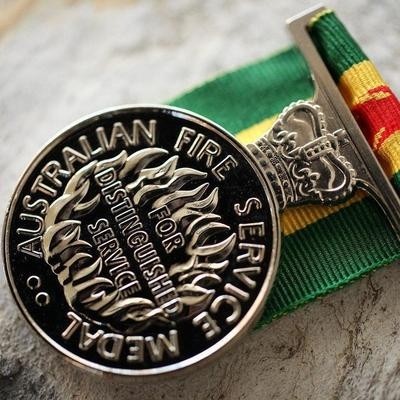
VFBV extends our congratulations to all members honoured for their contribution among more than 700 other recipients of Australia Day Honours in 2025.
CFA members who were awarded the prestigious Australian Fire Services Medal (AFSM) were CFA volunteers Di Billingsley, Fiona Burns, Lisa Hicks, Mark King and Tim Smith along with District 17 ACFO Mark Gunning. You can read more about each CFA’s recipient and their service on the VFBV website and on page 5 of the February edition of Fire Wise.
FRV members Ben Schmidt and Murray Talbot and FFMVic members Peter Brick and John Wood were also recognised with AFSMs and Life Saving Victoria volunteer and CFA member Tony Hodder received the Emergency Services Medal.
VFBV congratulates all members for their outstanding contribution to the broader community along with the other Australian’s who were recognised in the Australia Day honours list.
Champs Reminder
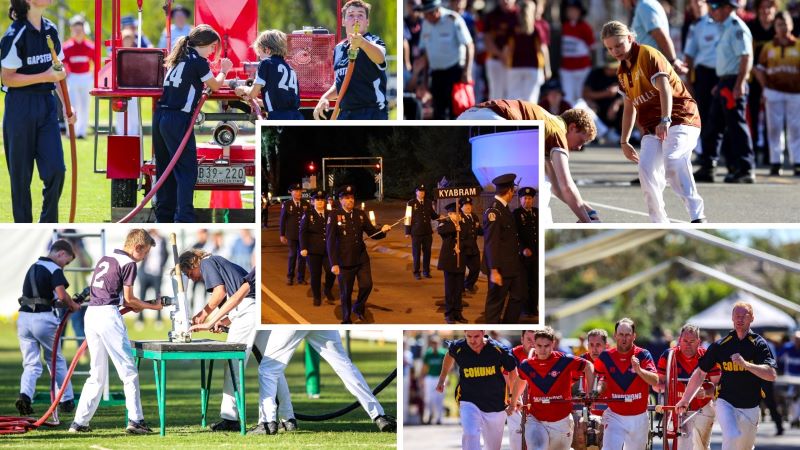
A final reminder that entries as well as judge and official nominations for the 2025 State Championships close on Sunday 16 February 2025.
To enter your team or register as a judge and official please visit the VFBV website.
The State Championships will be held on the weekends of 22 and 23 March (Urban Juniors) and 29 and 30 March (Rural Juniors and Seniors and Urban Seniors) in Mooroopna for the fifth year in a row. The Torchlight Procession will also take place on the evening of 29 March in Mooroopna and all brigades are encouraged to participate even if they are not participating in the Championships. If you would like further information on the Torchlight Procession please contact the VFBV office via This email address is being protected from spambots. You need JavaScript enabled to view it.
The VFBV website has information for all competing brigades including updated rule books for both the rural and urban competitions and details of local competitions being held in the lead up to the State Championships.
If you require any assistance during the registration process or for more information on the Championships, please contact the VFBV office on (03) 9886 1141 or This email address is being protected from spambots. You need JavaScript enabled to view it.
Trustees
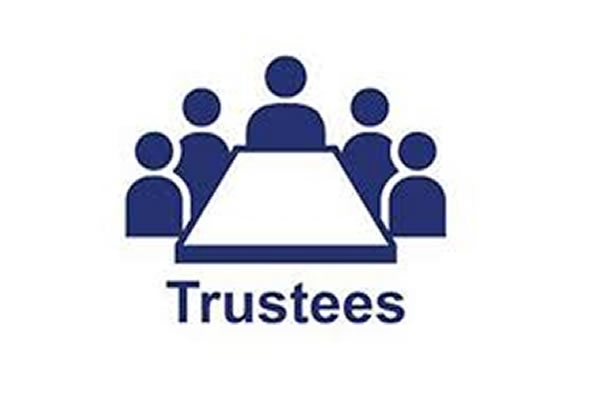
VFBV is calling for nominations from volunteers interested in being a VFBV appointed trustee to the CFA and Brigades Donations Fund.
The Fund was established in 2004 to ensure brigades continued to have deductible gift recipient status following the introduction of the GST and changes made to the charities law that required the associations to advocate for the retention of individual brigade charity status.
The Trust’s purpose is to raise and receive money and donations of goods and services from the public for distribution to Brigades to assist with costs of purchasing and maintaining firefighting equipment, facilities, training and resources and administrative expenses of Brigades which are associated with their firefighting functions.
Over recent years the Trust has been managing donations received following the 2019/20 bushfire season, this includes the brigade pick list program; breathing apparatus (BA) sets and additional cylinders; defibrillators for CFA vehicles; and the mobile data capability project. In total since 2020 the Fund has allocated $19million to fund these projects.
Following nominations, five new or reappointed members will be appointed by the VFBV Board to serve as VFBV Trustees on the Fund for a term of two years. All current Trustees are eligible for re-appointment.
The Trust Fund committee meets quarterly, either virtually or at CFA headquarters.
Nominations close Monday 16th June 2025 and further information including how to apply can be found on the VFBV website.
Position Vacant – VFBV Support Officer (South West)
VFBV is seeking to appoint a VFBV Support Officer to work in regional Victoria with VFBV District Councils, Brigades and volunteers to facilitate consultation, issues resolution, delegate support and volunteer engagement.
The position is a state role, with emphasis and focus on providing support throughout CFA’s South West region (CFA Districts 4, 5, 6 and 7).
For more information including how to apply visit the VFBV website.
Applications close on Monday 10th February 2025.
Fire Wise – February 2025 online only edition
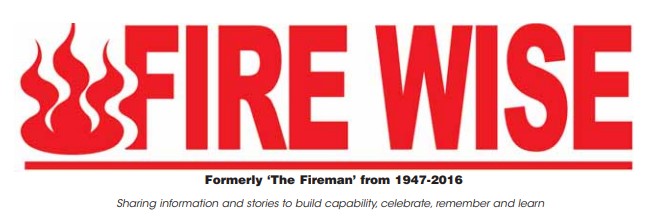
The February 2025 edition of Fire Wise has been published online only, this edition and past editions are available from the Fire Wise website.
You can support Fire Wise and the role it plays as an independent voice in keeping volunteers informed by becoming a subscriber. To become a subscriber visit the Fire Wise website or contact the Managing Editor of Fire Wise, Gordon Rippon-King either by phone 0402 051 412 or email This email address is being protected from spambots. You need JavaScript enabled to view it.
Emergency Services Foundation – Volunteer Leaders: Safeguarding Mentally Healthy Teams

The Emergency Services Foundation (ESF) is launching a new initiative in 2025 Volunteer Leaders: Safeguarding Mentally Healthy Teams. This program has been designed specifically for volunteers and is intended to better equip volunteer leaders to lead their teams with a psychological safety lens, improve mental health literacy while also building local inter-agency connections.
Three programs will be offered in 2025 across the state at no cost to volunteers but numbers are limited in each program. To find our more information or to register for the program visit the ESF website.
Recent articles on the VFBV website
Now Open - 2024-25 VFBV Volunteer Survey
CFA Board – Invitation to Apply
Nominations for CFA and Brigades Donations Fund Trustees
2025 State Championships Entries Open
Position Vacant – VFBV Support Officer (South West)
Presumptive Legislation Update
Enjoy the VFBV monthly newsletter?
If you enjoy reading the VFBV newsletter each month, why not share it with your fellow volunteers?
Either share this page with others who may enjoy the articles or encourage other volunteers to sign up to receive their own copy via email each month here.
Want to read the VFBV 2-minute briefings from the CFA/VFBV Joint Committees?
The latest edition along with previous editions can be downloaded from the VFBV website here.
 Library
Library 